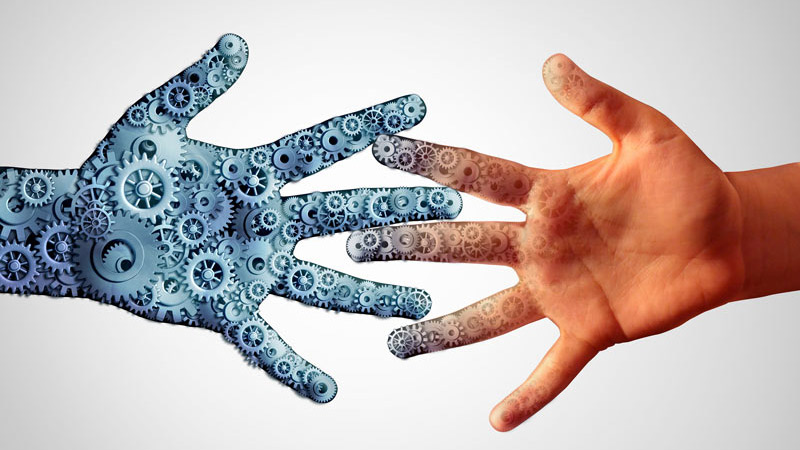It's not so easy to explain. Because the term "digitalisation" encompasses countless possibilities. It includes simple things like switching to email as well as complicated technologies based on machine learning.
But: when people talk about the digitalisation of office work, they usually mean the conversion of analogue workflows to digital processes. This also goes hand in hand with the keyword "Office 4.0", which is understood to mean a largely fully digitalised and automated office workplace.
Office 4.0" could also make the dream of a paperless office come true. Because: if information is only available in bits and bytes, you - theoretically - no longer need paper. And thus no more folders, pens and hole punches.
As said, there is no one solution for digitising your office work. Rather, you have numerous options to choose from to make your activities faster, more efficient, more customer-friendly and cheaper thanks to digital tools and platforms.
Here are a few selected examples:
The peak phase of the Corona pandemic has shown it impressively: You don't have to meet your colleagues in the same room for many business meetings. Video conferencing tools make it easy to hold virtual meetings, no matter where in the world the participants are located.
When things need to be resolved, you don't need face-to-face meetings or video conferencing. Collaboration tools make it possible to exchange information asynchronously: send a quick message via chat, create surveys or upload documents to the cloud storage.
Agile project management methods like to work with large whiteboards and stickers in the conception phase, but you should manage the administration and assignment of tasks digitally. With cloud-based project management tools, everyone involved can keep track of everything - even if teams are distributed all over the world.
Staff scheduling for larger projects can also be digitised. Find out more in our DB Netz success story.
Despite the increasing digitalisation of the office, there is still traditional letter post. Capturing this and distributing it to everyone in a company can be a major effort. Fortunately, thanks to DMS systems, the documents can be digitised and automatically assigned.
Invoices that are automatically digitised, uploaded to financial accounting systems and independently recognised, allocated and posted by these systems - this is not witchcraft. On the contrary, this is now a very widespread process in the digitalised office.
Here a piece of paper with notes, there a file: In the past, it was common practice to file customer data in analogue form. This way of working is a no-go when digitising the office workplace. Instead, it is better to use CRM systems and similar tools to centrally store all information about your customers and business contacts.
Repetitive tasks eat up a lot of time and cost nerves. That's why you should digitise and automate as many tasks as possible as part of a process digitisation. So-called RPA bots can help here. These are software robots that independently perform a variety of repetitive office tasks.
If you carry out a consistent digitisation of your office workplace, you will benefit from several advantages. For example, from these:
The bottom line is that "Office 4.0" brings more efficiency in various areas. This can be a decisive advantage in the ever tougher international competition.
Yes and no. You probably can't do without letters, printouts or files. But you should work hard to work with as little paper as possible. Because paper is a symbol for old, analogue ways of working.
Instead, develop completely new, preferably fully digital processes for your office! Try to automate work steps where possible by letting more or less "intelligent" tools take care of the tasks.









